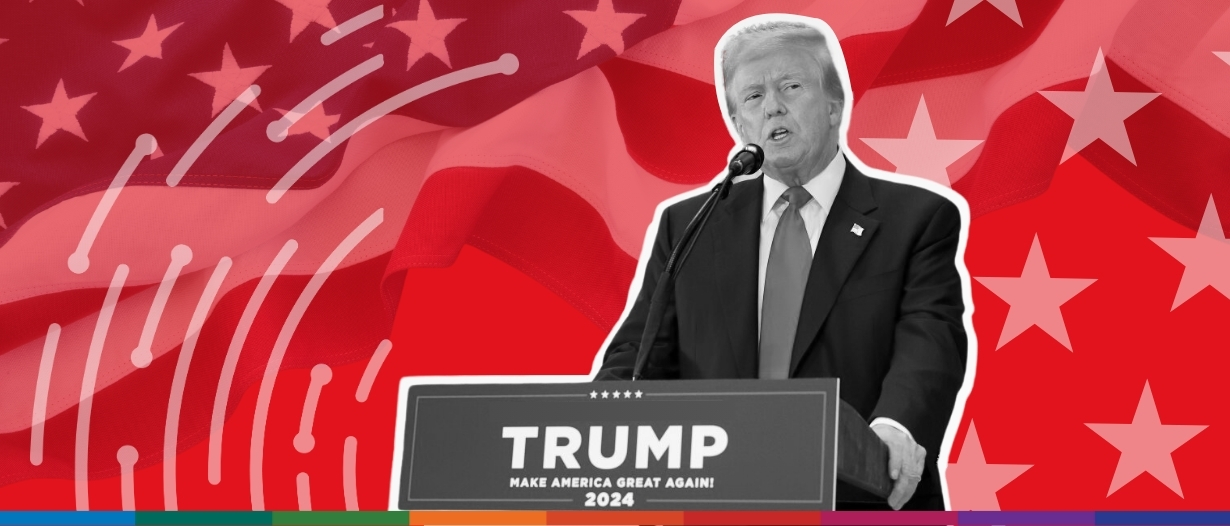Estimated reading time: 4 minutes
- After a razor-edge election build-up, Donald Trump has become the 47th President of the United States.
- [UPDATE] At 10:33 GMT, Trump is projected to have won the election with 279 of the electoral college votes – and a decisive margin of 56.
- This is Trump’s second term in office, the first being from 2017-2021.
According to exit polls, 31% of Americans cited ‘the economy’ as their biggest concern when voting – the second highest factor after 34% responding ‘state of democracy’. Trump’s popularity must, in part, be attributed to his economic focus and naturally aggressive ‘American first’ instinct.
His proposed ‘Maganomics’ agenda threatens to reshape the global economic landscape in ways not seen since the 1930s, with potentially seismic implications for international trade, treasury operations, and cross-border payments.
But it’s yet to be seen whether his hardline proposals will play out, and whether the international trade network and its facilitating components will change at all – particularly because of Trump’s relative resistance to digital payment methods, compared with his former opponent, Kamala Harris.
Can the Great Tariff Wall protect American industry?
The cornerstone of Trump’s economic vision – a universal 10% baseline tariff on all imports combined with punitive 60% duties on Chinese goods – would effectively erect the highest trade barriers in nearly a century. The primary concern of this radical protectionist stance, from an international perspective, is its potential to trigger retaliatory responses from trading partners.
These measures could also create new inflationary pressures just as central banks have begun to tame price growth, to the detriment of American people and global supply chains.
Simultaneously, Trump’s proposal to lower corporate tax rates for domestic manufacturing to 15% through a 28.5% domestic production activities deduction, while simultaneously imposing sweeping tariffs, presents a complex challenge for treasury markets. Tax Foundation analysis suggests these policies would increase the US debt-to-GDP ratio from 201.2% to 223.1% on a conventional basis, potentially straining government financing capabilities at a time of already elevated interest rates.
While Trump promotes tariffs as a revenue generator, economists warn that the income would fall far short of offsetting the tax reductions. Particularly since, from the Tax Foundation study, even a modest 10% retaliatory tariff plus targeted Chinese countermeasures would erase two-thirds of any economic gains from the proposed tax cuts.
This fiscal expansion comes at a precarious time, with interest payments on federal debt reaching $659 billion in 2023. The contradiction between revenue-reducing tax cuts and increased spending needs could force difficult choices about government funding or risk further deterioration of America’s fiscal position.
Will USD keep the payments throne?
In theory, the implications of Trump’s proposed tax cuts, increased spending, protectionist agenda, and pressure on the Fed to maintain artificially low rates could have profound implications for the US dollar’s reserve currency status. With America’s interest payments on its nearly $36 trillion debt now exceeding defence spending at $763 billion annually, international confidence in the greenback is somewhat undermined. Market participants are already pricing in significantly higher long-term rates, suggesting growing skepticism about the sustainability of such policies.
The proposed mass deportation of workers, combined with aggressive reshoring policies, threatens to create inflationary pressures that could destabilise existing trade finance arrangements. Previous experience suggests the Fed’s independence might be compromised under political pressure, as evidenced by Powell’s 2019 policy shift following presidential criticism.
With commodities and most global currencies priced in dollars, any erosion of confidence in US monetary policy could accelerate the search for alternative payment mechanisms and reserve currencies.
Changes to the US dollar’s position will be more rhetorical, rather than challenging the currency’s unassailable prominence statistically. May 2024 SWIFT data reveals that the US dollar accounts for over 80% of trade finance, for its prominence in invoicing and settling commodity trade. It also accounts for nearly 60% of FX reserves.
Having said this, the presidential candidates varied greatly in their outlook on trade and payment digitalisation.
As vice president, Harris’ attempted to expand the US Digital Service (USDS), presaging an expansion had she taken the presidency. The agency, established under former President Obama to support the Affordable Care Act’s technology infrastructure, has developed capabilities that could underpin a digital dollar initiative. Before the White House, while serving as Senator, Harris bid to increase USDS funding by 400%.
In contrast, Donald Trump has characterised central bank digital currency (CBDC) as “very dangerous” and “government tyranny”. This perspective means the US is likely to continue lagging behind the 134 other nations exploring CBDC development worldwide.
—
Models and studies are speculative.
Nonetheless, for American citizens, a report commissioned by the US-China Business Council, Oxford economists predict more than 700,000 job losses and a cost of over $1.6 trillion to the US economy as a result of the China tariffs.
For businesses and investors, the implementation of such policies could fragment the global economy into competing trade blocs, shifting decisively away from the post-war liberal economic order.
And for global stability, threatening Nato in February this year, Trump has made clear that his aggressive decoupling strategy in trade, treasury, and payments, will define the geopolitical trajectory for at least the next few years – but likely far beyond.























